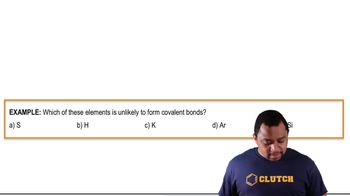Here are the essential concepts you must grasp in order to answer the question correctly.
Bond Length and Bond Order
Bond length is the distance between the nuclei of two bonded atoms. Generally, as bond order increases (from single to double to triple bonds), bond length decreases due to increased electron sharing. A single bond has the longest length, while a triple bond has the shortest. Understanding this relationship helps in determining the type of bond based on measured lengths.
Recommended video:
C—O Bond Characteristics
Carbon-oxygen (C—O) bonds can exist in various forms: single (C—O), double (C=O), and triple (C≡O). Each type has distinct properties, with single bonds being longer and weaker, while double and triple bonds are shorter and stronger. The specific bond length of 120 pm suggests a bond type that is neither too long nor too short, indicating it is likely a single or double bond.
Recommended video:
Comparative Bond Lengths
To assess the bond type, it is useful to compare the given bond length with known values for C—O bonds. A typical C—O single bond is around 143 pm, while a C=O double bond is approximately 120 pm. This comparison allows for a more accurate determination of the bond type in the new compound based on the measured bond length.
Recommended video:
 Verified step by step guidance
Verified step by step guidance

